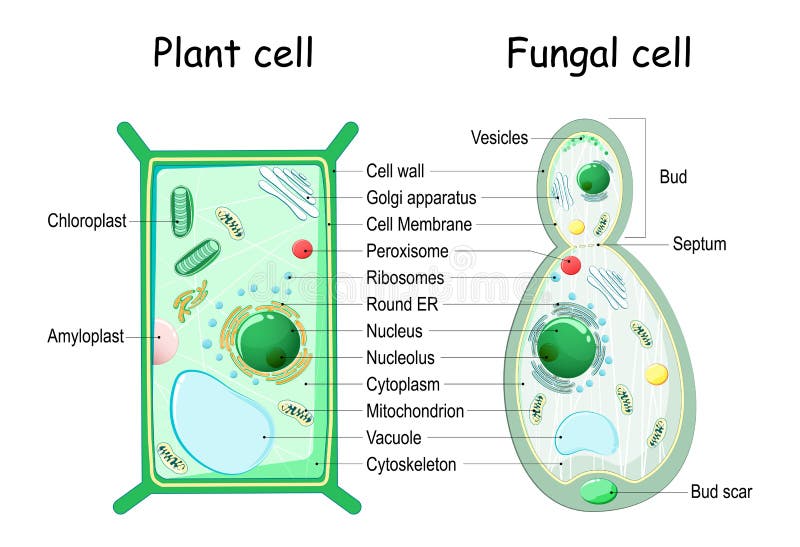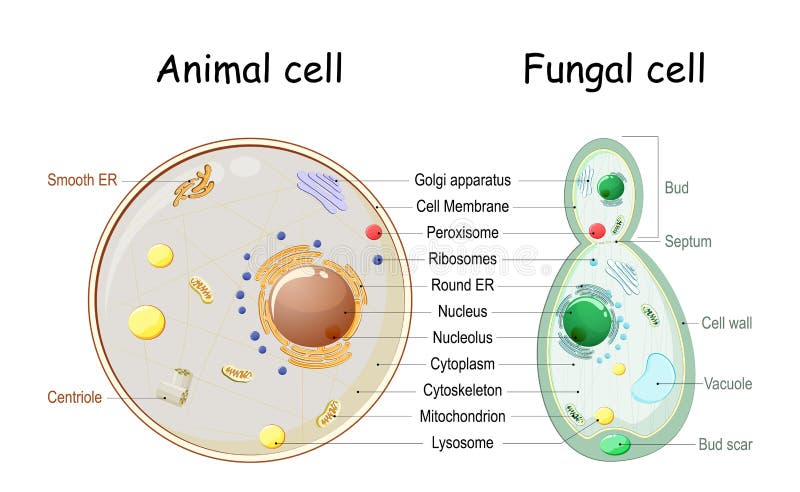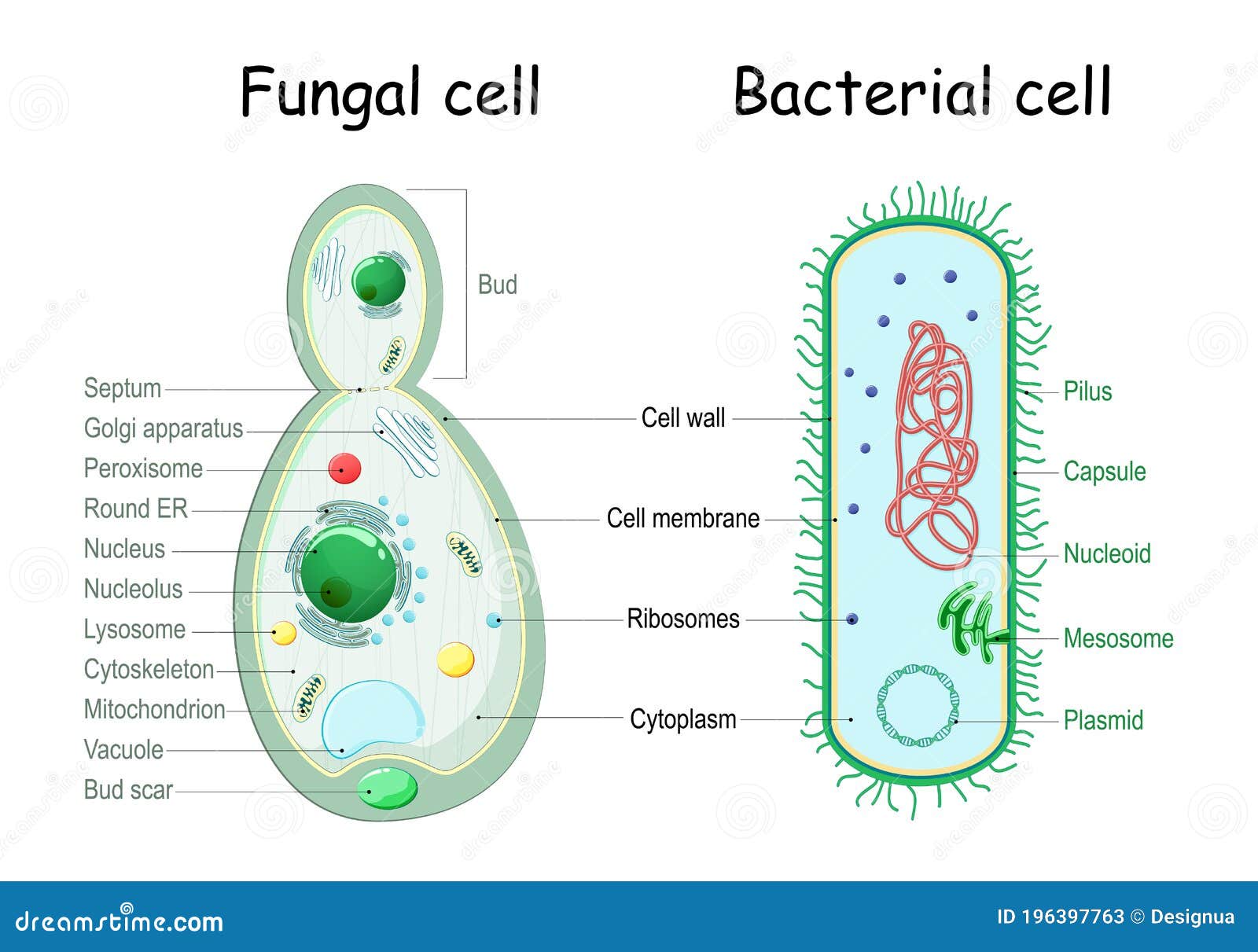Featured
fungi cell
Fungitell Associates of Cape Code Inc East Falmouth MA USA Wako. A cell wall is an outer layer surrounding certain cells that is outside of the cell membraneAll cells have cell membranes but generally only plants fungi algae most bacteria and archaea have cells with cell wallsThe cell wall provides strength and structural support to the cell and can control to some extent what types and concentrations of.

Typical Fungi Cell Fungal Hyphae Structure Fungi Diagram Illustrating The Ultrastructure Of A Septate Hypha Royalty Free Cliparts Vectors And Stock Illustration Image 36477181
Others just hang out or glide along.

. Bacteria are single-celled microorganisms. Fungi are characterized by non-motile bodies thalli constructed of apically elongating walled filaments hyphae a life cycle with sexual and asexual reproduction usually from a common thallus haploid thalli resulting from zygotic meiosis and heterotrophic nutrition. Structure consists of discrete elements within a single multinucleate cell which often are hard to visualize after the cell is crushed.
Several species of fungi mostly yeasts live harmlessly on the human body. Their long fibrous cells can penetrate plants and animals breaking them down and extracing nutrients. The wall protects the cell from desiccation and predators.
They come in all sorts of shapes including rods spirals and spheres. Spindle pole bodies not centrioles usually are associated with the nuclear envelope during cell division. The exception to this rule are red blood cells which have no nucleus and do not live very long.
In filamentous fungi the mycelium may fragment into a number of segments each of which is capable of growing into a new. After some growth these cells divide and eventually a population of cells forms. Some yeasts which are single-celled fungi reproduce by simple cell division or fission in which one cell undergoes nuclear division and splits into two daughter cells.
At least four BDG detection assays have been developed. A steroid molecule that replaces the cholesterol found in animal cell membranes. Plant cell walls are composed of cellulose which sets them apart from other organisms with cell walls such as bacteria peptidoglycan and fungi.
Chitin also found in the exoskeleton of insects gives structural strength to the cell walls of fungi. Their cell structure is unique in that they dont have a nucleus and most bacteria have cell walls similar to plant cells. The natural propensity for mycologists to collect and identify field-collected material just doesnt work that well for.
Spore phenotypes also are subject to change from natural senescence or from action by a range of biotic or abiotic factors. Some bacteria can swim around using long tails called flagella. Fungi have plasma membranes similar to other eukaryotes except that the structure is stabilized by ergosterol.
Protists are single-celled or multi-cellular microscopic organism with cell nuclei and which arent plants animals or fungi. Saprotrophic nutrition s æ p r ə ˈ t r ɒ f ɪ k-p r oʊ- or lysotrophic nutrition is a process of chemoheterotrophic extracellular digestion involved in the processing of decayed dead or waste organic matterIt occurs in saprotrophs and is most often associated with fungi for example Mucor and soil bacteriaSaprotrophic microscopic fungi are sometimes called saprobes. Eukaroyte cell with clear nucleus red and ovoid shaped organelles.
Algal cell walls are similar to those of plants and many contain specific polysaccharides that are useful for taxonomy. Cell Wall Definition. An abundant cell wall polysaccharide 1-3-β-d-glucan BDG is found in most fungi with the notable exception of the cryptococci the zygomycetes and Blastomyces dermatitidis which either lack the glucan entirely or produce it at minimal levels.
The nucleus contains all the Eukaryote cell DNA for instance and the Mitochondria are where energy is generated. Prokaryotes do not have a nucleus mitochondria or any other membrane bound. Fungi are important decomposers in most ecosystems.

Changing The Way You Learn Flashcards

Fungal Cell Structure Stock Illustrations 153 Fungal Cell Structure Stock Illustrations Vectors Clipart Dreamstime

Budding Fungus Cell Structure Anatomy Of Fungal Cell Typical Labeled And Detailed Diagram Of Fungus Cell In Kingdom Fungi Stock Vector Image Art Alamy

Fungal Cell Structure Stock Illustrations 153 Fungal Cell Structure Stock Illustrations Vectors Clipart Dreamstime

Structure Of Fungal Cell With Diagram Fungi

Fungal Cell Structure Stock Illustrations 153 Fungal Cell Structure Stock Illustrations Vectors Clipart Dreamstime
Popular Posts
ghost riders motorcycle club texas
- Get link
- Other Apps

Comments
Post a Comment